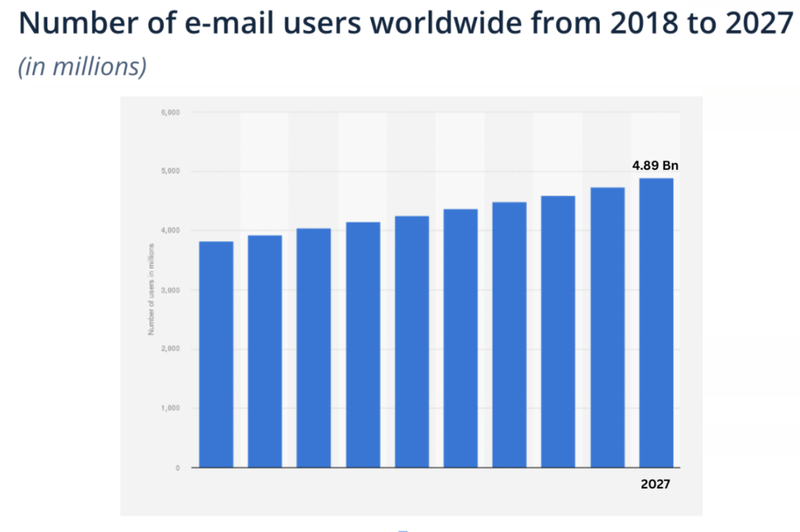
Re-Engage and Retain: Email Marketing Systems and Subscriber Loyalty
Keeping existing customers is equally important as bringing in new ones. Though not always obvious, email remains one of the most powerful channels for fostering loyalty. Subscriber loyalty matters because loyal customers are more likely to repurchase, refer others, and engage consistently.
Modern email marketing systems are there to scale and personalize re-engagement efforts through automation, segmentation, and personalization. These tools help marketers deliver timely, relevant messages to the right audiences while analytics provide insight into campaign performance and customer behavior. It also enables marketers to stay competitive through the use of smart re-engagement strategies that revitalize inactive subscribers, reintroduce them to your brand, and ensure continued engagement.
In this article, we will explore how email marketing systems can be used to re-engage dormant contacts and build stronger, loyal connections. We will also offer actionable tips to optimize your campaigns and retain subscribers over the long term.
How to Build Effective Re-Engagement Campaigns

Image sourced from Statista
Email marketing systems have become indispensable in managing the scale and complexity of customer communication. Despite the rise of mobile messengers and chat apps, email continues to be a vital touchpoint, used daily by billions globally. According to Statista, the number of email users worldwide reached $4.37 billion in 2023, and is expected to grow to $4.89 billion by 2027.
Email marketing systems empower brands to run effective re-engagement campaigns by identifying inactive subscribers. Those subscribers who haven’t opened, clicked, or converted within 60 to 120 days are targeted through behavioral segmentation, activity-based triggers, and personalized messaging. With the right email marketing systems, businesses can breathe new life into dormant relationships and reinforce long-term loyalty.
Here are the key steps to building effective re-engagement campaigns:
Segment Inactive Subscribers
Start by identifying inactive subscribers based on their lack of interaction with recent emails. Use filters like "no opens in 90 days" to target specific groups and tailor your messaging effectively. Behavioral segmentation ensures you send relevant content to the right people. This approach used in your email marketing systems is especially valuable across industries that benefit from targeting, where personalized follow-ups can maintain visibility.
Personalize Content
Personalization goes beyond using a subscriber's name. Reference their past purchases or interests to create tailored messages that speak directly to their preferences. If you truly want to capture attention, go for a personalized email. Create one that showcases products they previously viewed or offer a discount on items they’ve shown interest in.
Offer an Incentive
Sometimes, a nudge is all it takes to bring inactive subscribers back, and email marketing systems make this process seamless. The goal is to reignite interest. Do this through an exclusive discount, early access to new products, or a special offer. Make sure the incentive feels exclusive and time-sensitive to motivate quick action.
Write Compelling Subject Lines
Craft engaging subject lines like "Your special offer inside" or "We miss you!" to capture attention and prompt opens. Personalize the subject line further by using the subscriber's name to increase the chances of them clicking through.
Test and Optimize
Constant testing is essential for success. A/B test different subject lines, content, and offers to understand what resonates best with inactive subscribers. You can also use analytics to monitor results, refine your approach, and improve campaign performance.
How to Track Success and Optimize Strategy
Loyalty programs sent through email campaigns help build lasting customer relationships and encourage repeat engagement. By leveraging email marketing systems, brands can create a sense of exclusivity. Keep subscribers connected by offering tailored perks, rewards, and early access.
Track key metrics like open rates and redemptions to ensure strategies stay effective. With the email marketing market projected to hit $81.59 billion by 2034 and grow 17%, email-driven loyalty efforts offer a strong competitive edge.
Below are the effective tips to help track email success and optimize strategy.
Monitor Key Metrics
Monitor essential performance metrics like open rates, click-through rates (CTR), and conversion rates to gauge the effectiveness of your loyalty program emails. A high CTR shows your messages are compelling. On the other hand, tracking conversion rates reveals whether subscribers are acting on your calls-to-action, such as signing up or making a purchase.
Analyze Bounce and Unsubscribe Rates
Pay attention to bounce rates, which indicate issues with email deliverability, and unsubscribe rates, which can show dissatisfaction or irrelevant content. Take note, a high unsubscribe rate might signal the need to adjust your messaging or frequency to avoid overwhelming subscribers.
Track Engagement Over Time
Track subscriber engagement to see if your efforts lead to sustained interest. Monitor whether re-engaged subscribers continue to open emails, participate in the loyalty program, or make repeat purchases.
Gather Subscriber Feedback
Direct feedback from subscribers through surveys or email replies provides invaluable qualitative insights. You can ask subscribers about their experience with your loyalty program. This can help you refine offers, adjust communication strategies, and better understand what motivates their engagement.
Re-engage Inactive Customers: Utilize Email Marketing Systems
Re-engage inactive customers through email marketing to boost retention and revive customer interest. Maximize the use of email marketing systems to deliver targeted messages based on behavior and preferences. With tailored offers, reminders, or value-driven content, you can reconnect with disengaged subscribers. Identify inactive users and address their needs with timely, relevant communication to rebuild trust and improve lifetime value. Drive long-term customer growth and loyalty by using email marketing systems to reconnect with inactive subscribers today.